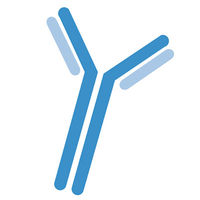预约演示
更新于:2025-05-07
FAP x Tubulin
更新于:2025-05-07
关联
2
项与 FAP x Tubulin 相关的药物作用机制 FAP拮抗剂 [+1] |
非在研适应症- |
最高研发阶段临床1期 |
首次获批国家/地区- |
首次获批日期1800-01-20 |
作用机制 FAP调节剂 [+1] |
在研机构 |
原研机构 |
在研适应症 |
非在研适应症- |
最高研发阶段临床前 |
首次获批国家/地区- |
首次获批日期1800-01-20 |
2
项与 FAP x Tubulin 相关的临床试验NCT05547321
Phase 1 Dose-escalation Trial of OMTX705, an Anti-fibroblast Activation Protein Antibody-drug Conjugate, as Single Agent and in Combination With Pembrolizumab in Patients With Advanced Solid Tumors
Open-label, two parallel arm, multicenter, Phase 1 dose-escalation study to evaluate the safety and tolerability of OMTX705, both as monotherapy or in combination with pembrolizumab in the treatment of patients with advanced or metastatic cancer in whom there is no available standard therapeutic option.
开始日期2022-10-20 |
申办/合作机构 |
CTIS2024-514746-36-00
- OMTX705-001
开始日期2022-10-20 |
申办/合作机构 |
100 项与 FAP x Tubulin 相关的临床结果
登录后查看更多信息
100 项与 FAP x Tubulin 相关的转化医学
登录后查看更多信息
0 项与 FAP x Tubulin 相关的专利(医药)
登录后查看更多信息
2
项与 FAP x Tubulin 相关的文献(医药)2018-01-01·Cell Structure and Function
Flagellar-associated Protein FAP85 Is a Microtubule Inner Protein That Stabilizes Microtubules
Article
作者: Oiwa, Kazuhiro ; Kirima, Junya
OncoTargets and Therapy4区 · 医学
<p>The Somatic Mutation Landscape and RNA Prognostic Markers in Stomach Adenocarcinoma</p>
4区 · 医学
ArticleOA
作者: Li, Zhen ; Liu, Guangzhi ; Gao, Shanjun ; Zhang, Xiulei ; Zheng, Peiming
分析
对领域进行一次全面的分析。
登录
或

生物医药百科问答
全新生物医药AI Agent 覆盖科研全链路,让突破性发现快人一步
立即开始免费试用!
智慧芽新药情报库是智慧芽专为生命科学人士构建的基于AI的创新药情报平台,助您全方位提升您的研发与决策效率。
立即开始数据试用!
智慧芽新药库数据也通过智慧芽数据服务平台,以API或者数据包形式对外开放,助您更加充分利用智慧芽新药情报信息。
生物序列数据库
生物药研发创新
免费使用
化学结构数据库
小分子化药研发创新
免费使用

